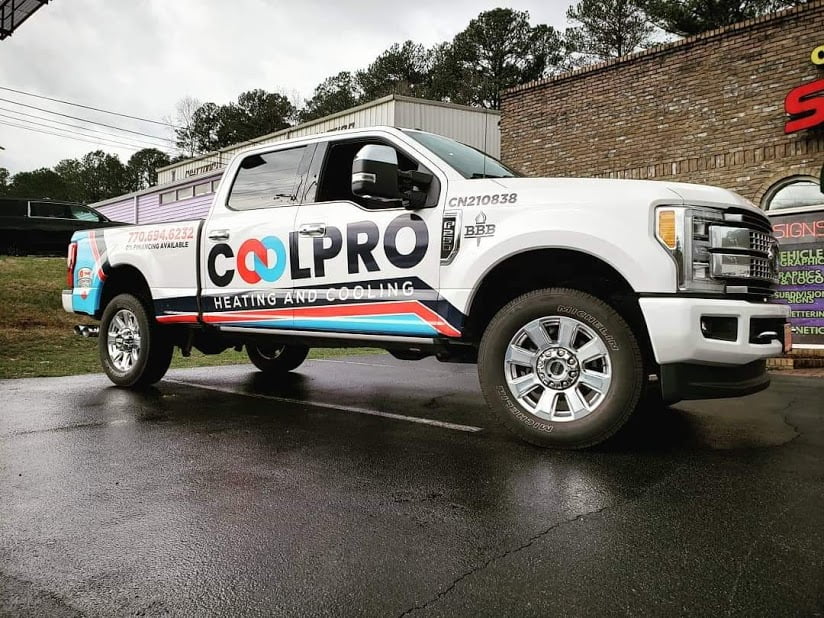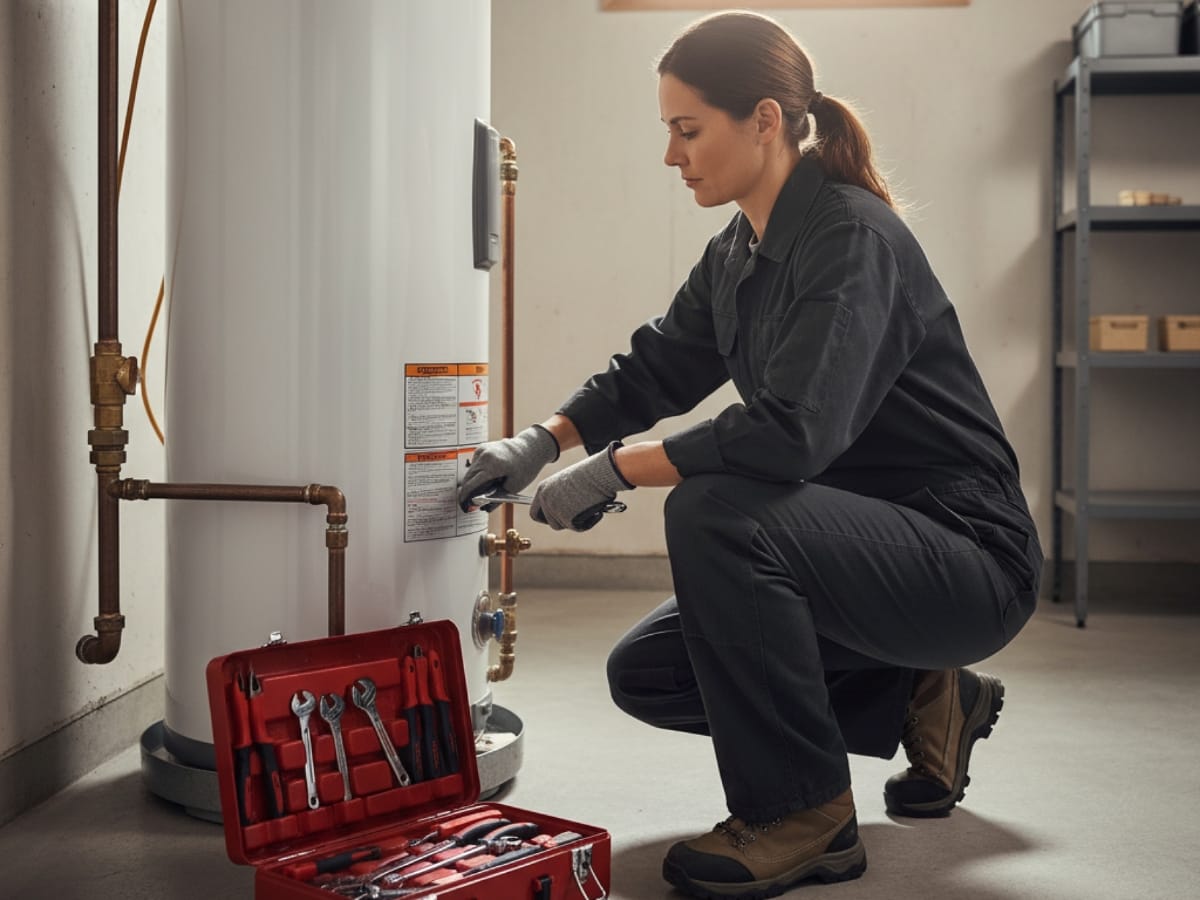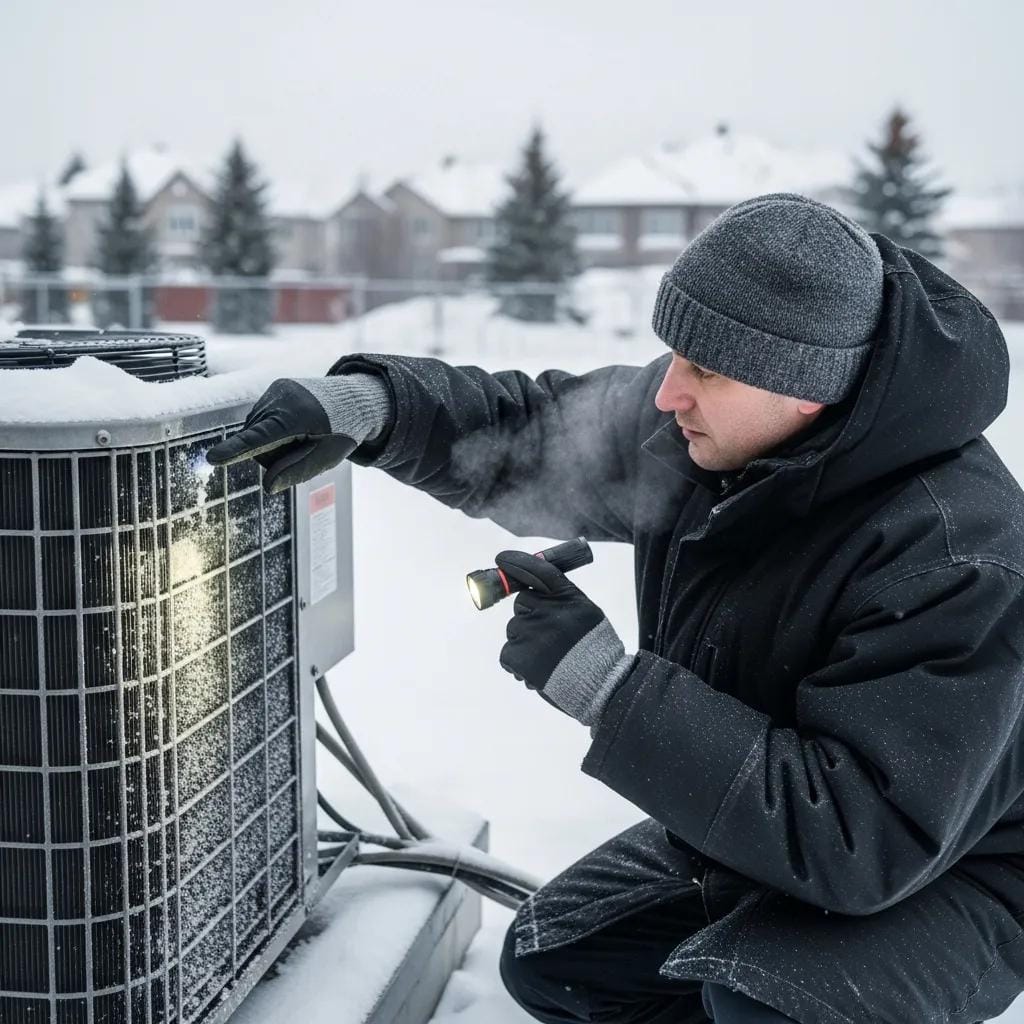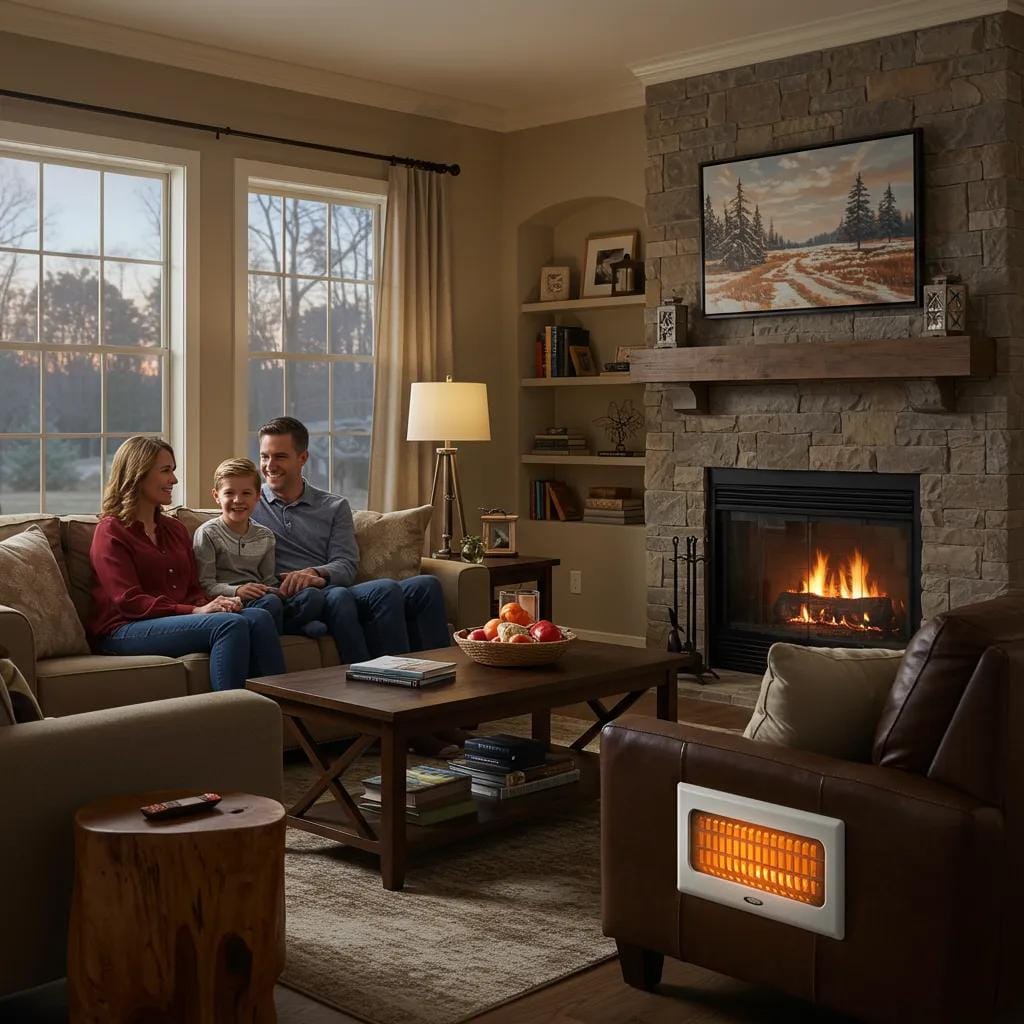As the vibrant colors of fall emerge in Acworth, now is the time to prepare your HVAC system for the cooler months ahead. Proactive maintenance not only ensures efficient heating when temperatures drop but also prevents costly mid-winter breakdowns in our variable Georgia climate. In this guide, we’ll walk through essential fall HVAC maintenance tasks—from replacing air filters to inspecting heat exchangers—so you can enjoy consistent comfort, lower energy bills, and peace of mind all season long.
Fall HVAC Maintenance in Acworth: Keep Your Home Cozy & Efficient
What Does Fall HVAC Maintenance Include for Acworth Homes and Businesses?

Think of fall HVAC maintenance as a full checkup before cold weather settles in. The visit usually covers inspection, cleaning, safety testing, and small adjustments so the system starts easily, runs efficiently, and keeps indoor air clean. A thorough appointment looks at the furnace or heat pump, the thermostat, the filter, and the ductwork. Done before the first cold snap, this work lowers the chance of breakdowns and keeps energy use in check.
Which HVAC System Components Are Inspected During Fall Maintenance?
A technician will examine the furnace burners, heat exchanger, ignition system, and safeties, then confirm that the blower, capacitors, and wiring are sound. Heat pumps get the same attention, with added checks on the outdoor coil, the reversing valve, and the defrost controls. The thermostat is calibrated and its wiring verified. Filters and their housings are inspected for fit and condition. Duct seams, registers, and insulation are reviewed so heated air is not lost in attics or crawl spaces. These steps give a clear picture of system health before heavy use begins.
How Does a Furnace Tune-Up Improve Heating Efficiency and Safety?
Cleaning the burner area removes soot and dust that can waste fuel. Setting gas pressure and verifying combustion help the furnace produce steady heat with fewer start and stop cycles. Inspecting the heat exchanger reduces the risk of carbon monoxide leaks. Airflow measurements confirm the blower can move the right amount of air across the heat source, which protects equipment and improves comfort from room to room. When these items are addressed together, the furnace runs quieter, uses less fuel, and starts reliably on cold mornings.
What Are the Essential Heat Pump Winterization Steps for Fall?
Reliable heat from a heat pump depends on clear airflow and proper refrigerant charge. The outdoor unit should be cleared of leaves and debris, the coil rinsed if needed, and the fan checked for smooth operation. Pressures and temperatures are measured to confirm charge. The defrost cycle is tested so the unit can shed ice during cold, damp weather. Moving parts are lubricated where the manufacturer allows. Basic steps like these prevent frost buildup, keep capacity up, and help the system heat efficiently all season.
Why Is Thermostat Calibration Important for Cooler Weather?
A thermostat that reads high or low will run the system too long or not long enough. Calibration aligns displayed temperature with the actual room conditions so calls for heat are accurate. Correct settings reduce short cycling, limit hot and cold spots, and help keep bills predictable. If the thermostat is programmable or smart, schedules are reviewed so occupied times match real use and setback periods save energy without sacrificing comfort.
How Do Air Filter Changes and Ductwork Sealing Enhance HVAC Performance?
A clean filter protects indoor air and keeps the blower from working harder than it should. Replace or wash filters on a regular cadence, and choose a rating that balances air quality with airflow recommended by the equipment maker. Sealing gaps at duct joints with mastic or approved foil tape stops heat loss into unconditioned spaces and helps every room receive its share of warm air. Adding or repairing insulation on exposed duct runs keeps heat inside the ducts until it reaches the registers.
Why Is Annual Fall HVAC Maintenance Critical for Acworth Residents?
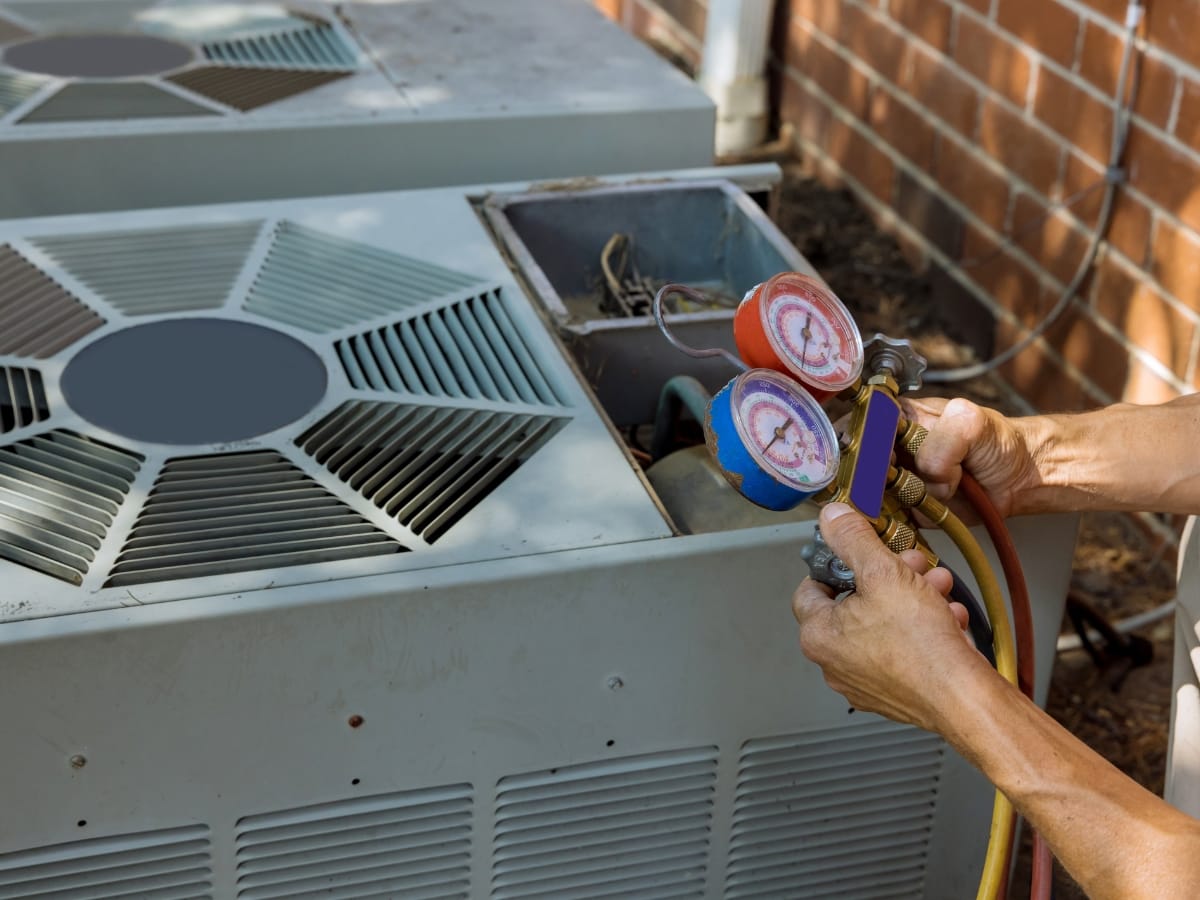
For Acworth homes and small businesses, a yearly checkup before cold weather is practical insurance. Heating equipment works hardest in the first real cold snap, which is when weak parts tend to fail. Scheduling fall HVAC maintenance catches small problems while they are inexpensive to fix, sets the system up for steady performance, and helps avoid inconvenient breakdowns when you need heat most. You also get cleaner airflow and a baseline record of readings that makes future troubleshooting faster.
How Does Fall Maintenance Extend HVAC System Lifespan?
Mechanical wear adds up over a season. A tune-up tightens electrical connections, verifies motor amperage, lubricates moving parts where the manufacturer allows, and checks bearings and belts for early wear. Burners are cleaned and adjusted so combustion stays stable. Heat pump components are tested so the defrost cycle works correctly and the reversing valve shifts cleanly. These steps reduce start-stop stress, keep temperatures in the safe operating range, and let the blower move the right amount of air. The result is less strain on the furnace, heat pump, and indoor fan, which supports a longer service life.
What Energy Savings Can You Expect From Seasonal HVAC Tune-Ups?
Well maintained systems use less energy to deliver the same comfort. Cleaning burners, coils, and filters improves heat transfer and airflow so the equipment does not have to run as long to reach setpoint. Setting gas pressure correctly and confirming refrigerant charge prevents wasted fuel or power. Many Acworth homeowners see a noticeable drop in winter utility bills after a thorough service because the system cycles less, starts more smoothly, and avoids short cycling. Lower runtime also means fewer peak-demand spikes and less wear on motors and controls over the season.
How Does Maintenance Improve Indoor Air Quality in Fall?
Once windows stay closed, indoor air depends on clean components and good filtration. A fall visit replaces or washes filters, clears dust from the blower compartment, and removes buildup on indoor coils so particles are not pushed back into the living space. Duct joints are checked for obvious leaks that pull attic or crawl-space air into the supply stream. These basics reduce dust, help limit allergens, and keep airflow balanced from room to room. If the thermostat supports circulating the fan on a schedule, your technician can set it up so air mixes without wasting energy.
What Safety Risks Does Fall HVAC Maintenance Prevent?
Safety checks are a core part of service. Inspecting the heat exchanger reduces the risk of carbon monoxide entering the home. Verifying flame sensor operation and ignition performance prevents nuisance shutdowns and unsafe re-tries. Electrical inspections catch loose connections and failing capacitors that can overheat. For heat pumps, checking defrost logic prevents heavy ice buildup that can damage the outdoor coil. These items are quick to test during fall HVAC maintenance and give you confidence heading into colder weather.
Simple Steps Between Visits
You can help the system too. Keep a clean filter in place, clear leaves from around outdoor units, and make sure supply and return vents are not blocked by furniture or rugs. If a thermostat is programmable or smart, review schedules when clocks change so occupied times are correct. Call for service sooner if you notice odd noises, frequent cycling, hot or cold rooms that are new, or a burning or musty odor on startup.
How Can Acworth Homeowners Perform DIY Fall HVAC Maintenance Safely?
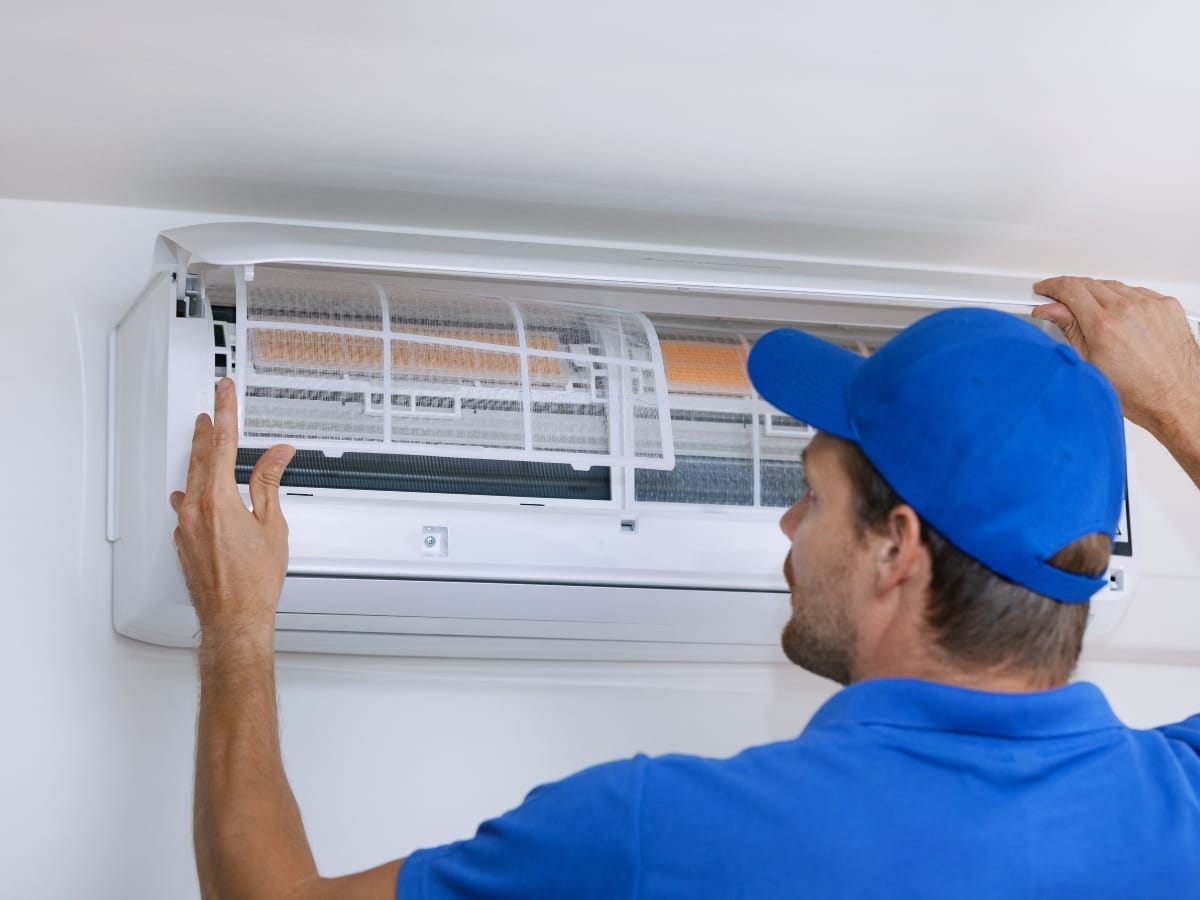
A little do-it-yourself care goes a long way between service visits. The goal is simple: keep air moving, reduce strain on the equipment, and spot small problems before they turn into big ones. With a few safe habits, you can make fall HVAC maintenance part of your seasonal routine and head into cooler weather with fewer surprises.
Which HVAC Tasks Are Safe For Homeowners To Do Themselves?
Start with the air filter. Check it every month and replace or clean it every one to three months, sooner if you have pets or recent renovation dust. A fresh filter protects indoor air and keeps the blower from working harder than it should.
Next, look at the outdoor unit. Clear leaves, pine straw, and grass clippings from the top and the sides so air can move freely, and keep shrubs trimmed back a couple of feet. Indoors, walk through the house and make sure supply registers and the main return grille are not blocked by rugs or furniture. A quick pass with a vacuum on the grille helps airflow. Open your thermostat’s settings and match schedules to your fall routine so the system is not heating when no one is home. While you are there, replace thermostat batteries if it uses them and confirm the clock is accurate.
You can also do a simple visual check around the air handler or furnace. Look for pooled water in the drain pan, loose panels, or damaged insulation on nearby ductwork. If you see standing water, shut the system off and schedule service. Do not remove access panels or reach into the equipment cabinet.
When Should You Call A Professional HVAC Technician?
Some work belongs with a licensed tech because it involves combustion, refrigerant, or high voltage. Examples include inspecting the heat exchanger for cracks, testing for carbon monoxide, measuring gas pressure, verifying heat pump charge and defrost sequence, cleaning burner assemblies, and confirming electrical readings on motors and capacitors.
If you notice frequent short cycling, new noises, a burning or sharp chemical smell, ice on a heat pump, or rooms that suddenly will not heat, stop DIY and get a pro involved. Those symptoms point to issues that require proper instruments and training to diagnose safely.
What Are The Risks Of Skipping Professional Fall HVAC Service?
Skipping the annual check can cost you in comfort, money, and safety. Dust on burners and indoor coils reduces heat transfer, which makes the system run longer to reach the set temperature. Loose wiring and weak capacitors can cause hard starts that stress motors and trip breakers. Small cracks in a heat exchanger may go unnoticed without testing, which raises the risk of carbon monoxide entering living spaces. Neglected filters and unsealed duct joints push dust back into rooms and can lead to higher allergy symptoms once windows are closed for the season. A short, planned visit each fall is far cheaper than an emergency call on the first cold night.
Practical Safety Notes For DIY Care
Turn the system off at the thermostat before you work around it. Stay clear of moving fan blades and do not spray water into any electrical compartment. If you rinse light debris from an outdoor coil, use gentle flow and avoid pressure washers. Keep records of filter size, change dates, and any concerns you notice. That simple log speeds up future service and helps you spot patterns.
How Does CoolPro Atlanta Provide Expert Fall HVAC Maintenance in Acworth?
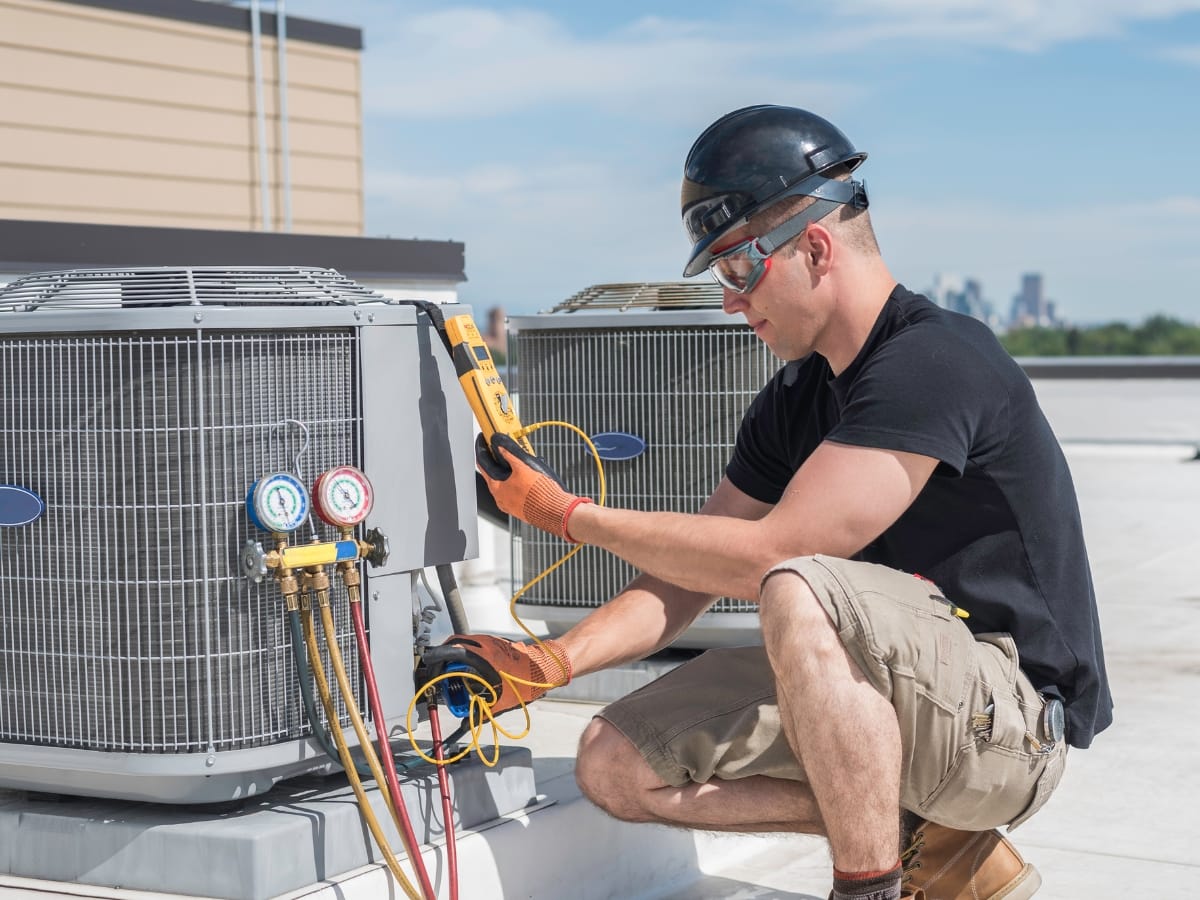
CoolPro Atlanta treats fall HVAC maintenance as a focused, seasonal tune-up that prevents surprises when temperatures drop. The team follows a documented checklist, records baseline readings for future comparison, and explains findings in plain language so homeowners know what was done and why. The aim is steady heat, safe operation, and predictable energy use through the colder months.
What Certifications and Expertise Do CoolPro’s Technicians Have?
Every service visit is handled by certified technicians who work to nationally recognized standards. Team members hold NATE credentials that validate troubleshooting and diagnostic skills. Many are trained as Trane Comfort Specialists, which means they complete ongoing factory education on current equipment. All technicians maintain EPA Section 608 certification for proper refrigerant recovery and handling. Beyond badges, they practice core safety steps on every call, including lockout procedures, combustion testing where applicable, and documentation of electrical readings.
How Does CoolPro Keep Service Prompt and Reliable?
Scheduling is designed around real life in Acworth. Appointments are offered in short windows with clear arrival updates. Trucks are stocked so common parts and filters are on hand, which reduces repeat visits. Pricing is presented up front and matched to the scope of work, so the homeowner knows what the visit includes. After service, the technician leaves a simple report that lists measurements, adjustments, and any items to watch over the season. That record makes the next visit faster and keeps everyone aligned on system history.
What Does a Typical Fall Visit Include?
A fall tune-up starts with a visual inspection of the furnace or air handler and the outdoor heat pump unit if present. Technicians clean burners or indoor coils as needed, confirm gas pressure and combustion on furnaces, and verify refrigerant performance and defrost operation on heat pumps.
They calibrate the thermostat, confirm safe operation of limit and safety controls, and check blower amperage and capacitor values against manufacturer data. Filters are replaced or cleaned, and the filter size and due date are recorded. Duct connections that are easy to reach are checked for obvious leaks or missing insulation. The result is a system that starts clean, moves the right amount of air, and cycles as intended when the first cold front arrives.
Which Areas in Metro Atlanta Does CoolPro Serve?
CoolPro supports homes and small businesses across North Cobb County, including Acworth, Kennesaw, and nearby communities. Service also extends through parts of Cherokee and Paulding counties, along with the greater Marietta and northwest Atlanta area. Coverage is organized to keep response times reasonable during busy weather shifts.
Why This Approach Works For Acworth Homeowners
Local weather can swing quickly in fall, which stresses equipment that has been idle. A structured visit before the season uncovers weak igniters, failing capacitors, loose connections, airflow problems, and thermostat issues while they are still simple to correct. Clean components and verified settings cut runtime and help hold utility bills in check. Just as important, safety checks reduce the risk of carbon monoxide exposure and electrical failures. With qualified people, clear processes, and region-specific know-how, CoolPro Atlanta delivers fall HVAC maintenance that keeps Acworth homes comfortable and ready for winter.
What Is Included in a Detailed Furnace Tune-Up Checklist for Fall HVAC Maintenance in Acworth?
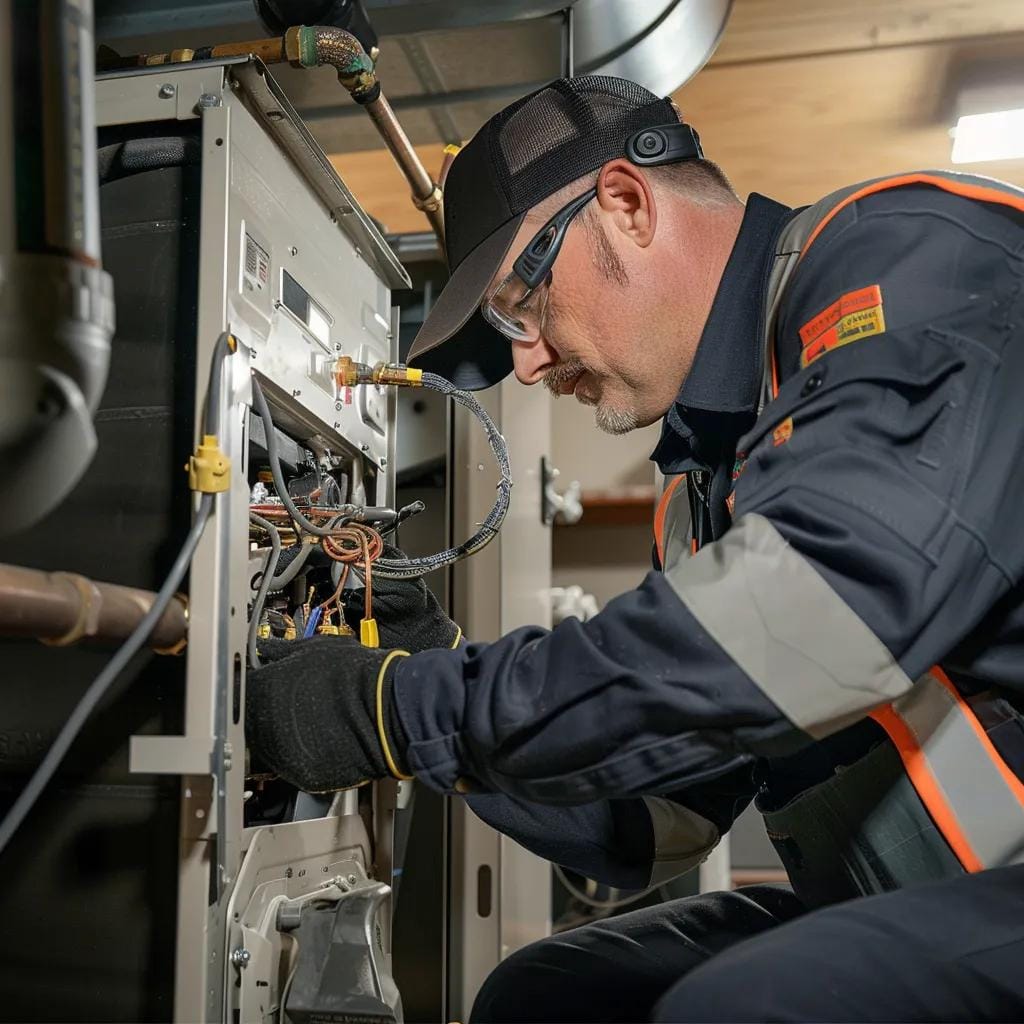
A solid checklist keeps your heating system predictable when colder weather hits. During fall HVAC maintenance, a technician inspects, cleans, tests, and documents the core items that affect safety, efficiency, and comfort. Expect attention to the heat exchanger, ignition and burner assembly, combustion air and venting, blower and electrical components, thermostat settings, air filter fit, and basic duct connections. The goal is steady heat, safe operation, and airflow that matches the equipment’s design.
How To Inspect and Clean the Furnace Heat Exchanger and Pilot Light
The heat exchanger is the first stop because it separates flue gases from the air you breathe. A bright light and mirror or borescope help reveal hairline cracks, rust flakes, and carbon streaks. Any buildup is gently brushed and vacuumed so combustion byproducts do not insulate the metal and trap heat. Next comes the pilot or electronic ignition and burners. Soot, dust, and spider webs are removed from the pilot assembly and burner ports so the flame is stable and evenly distributed. Proper flame shape and color are verified after cleaning. These steps support efficient combustion and reduce the chance of unsafe flue gas leakage.
What Are the Steps to Test Carbon Monoxide Safety During a Tune-Up?
Safety checks focus on verifying that combustion byproducts vent correctly. A calibrated instrument is placed in the flue to measure carbon monoxide during ignition, mid cycle, and just before shutdown. The tech notes draft strength, flue temperature, and CO readings, then compares results with published limits. If values trend high, the technician investigates causes such as restricted venting, improper gas pressure, dirty burners, or a failing heat exchanger. Where required, ambient CO levels are scanned in the equipment room and adjacent spaces. Results are recorded so future visits can spot changes quickly.
How To Check and Adjust Thermostat Settings for Fall Heating
Thermostat accuracy determines when the system starts and stops. The displayed temperature is compared to a reliable room thermometer; a difference beyond about 2 degrees calls for recalibration or sensor adjustment as specified by the manufacturer. For programmable and smart models, schedules are updated for shorter daylight hours and cooler nights. Fan settings are reviewed so circulation supports comfort without unnecessary runtime. If batteries power the thermostat, they are replaced and the clock is verified so programmed setpoints occur at the right times.
Why Lubricating Moving Parts Matters in Furnace Maintenance
Friction shortens motor and bearing life. Where the manufacturer allows, light oil or specified grease is applied to blower motor bearings and shaft bushings. Belt tension and alignment are checked so the blower wheel turns freely without slip. Motor amperage and capacitor values are measured and compared to the nameplate. These basic steps reduce start up stress, help maintain design airflow across the heat source, and keep noise down. Consistent lubrication and measurements also create a trend line that can reveal a failing component before it quits on a cold morning.
What Else Belongs On a Fall HVAC Maintenance Checklist?
Airflow and wiring round out the visit. The filter is checked for size, fit, and condition, then replaced or cleaned so the blower does not work against extra resistance. The blower compartment, return plenum, and nearby duct joints are inspected for obvious leaks or missing insulation. Electrical connections are tightened, safeties are tested, and panels are secured. When these items are handled together as part of fall HVAC maintenance, Acworth households enter winter with safer operation, fewer surprises, and heat that reaches rooms evenly.
How to Prepare Your Heat Pump for Winter in Acworth?
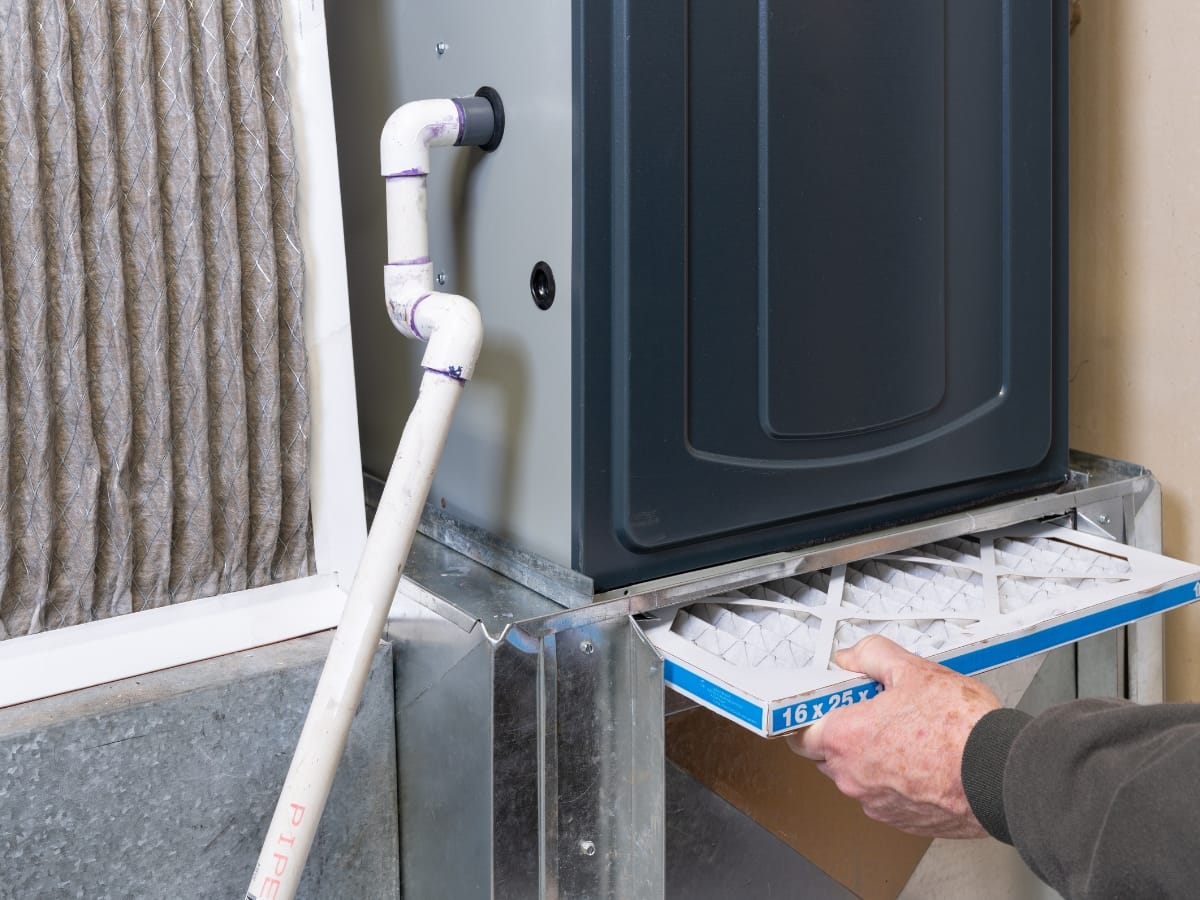
Getting your heat pump ready in the fall keeps it heating well when the first cold mornings arrive. A short checklist, paired with professional fall HVAC maintenance, protects efficiency, reduces wear, and helps you avoid surprise outages. The focus is simple: clear airflow, correct charge, accurate controls, and a defrost system that does its job.
What Is the Heat Pump Defrost Cycle and Why Does It Matter?
In cool, damp weather, frost forms on the outdoor coil and blocks airflow. The defrost cycle clears that frost by reversing the system for a few minutes so warm refrigerant melts the ice. Modern units use sensors and control boards to start defrost only when needed, often based on coil temperature and run time. If defrost does not start, the coil can ice over and the system will struggle to heat the house. If it runs too often, you waste energy and put extra hours on the compressor. Verifying sensor readings, fan operation, and the reversing valve during fall service keeps defrost reliable and efficient.
How Do You Keep Refrigerant Levels In The Safe Zone?
Refrigerant charge has to be right for the heat pump to move heat effectively. Low charge can cause long run times, poor heating, and icing. Overcharge can raise pressures and stress the compressor. Technicians confirm charge with pressure readings, temperature measurements, and manufacturer data for your specific unit. They often verify subcooling or superheat and check for leaks at service valves and flare connections. Homeowners should not attach gauges, but you can watch for warning signs such as short cycling, ice on the outdoor coil or lines, or lukewarm supply air. If you see those, schedule service before the weather turns colder.
What Energy Savings Come From Winterizing A Heat Pump?
Small fixes add up. A clean outdoor coil transfers heat better, so the unit reaches setpoint faster and spends less time in auxiliary heat. Correct charge and smooth defrost reduce the number and length of defrost events. Tight electrical connections and a tuned indoor airflow help the system deliver rated capacity without extra power draw. Many homes see lower winter bills after a thorough tune-up because the unit runs shorter cycles and avoids inefficient backup heat in mild weather.
Simple Homeowner Steps Before Cold Weather
Clear leaves, grass, and mulch from around the outdoor unit and keep at least two feet of space on all sides. Gently rinse the coil with a garden hose if it is dusty, avoiding high pressure and electrical panels. Inside, install a fresh filter sized to your system and confirm supply and return grilles are open. Set the thermostat to heat and test both normal heat and emergency heat so you know they work. If your control has an outdoor lockout for auxiliary heat, review the setting with your technician so strips do not run when the heat pump can handle the load.
Why Tie This Work To Fall HVAC Maintenance?
A professional visit catches the details you cannot see, such as weak capacitors, inaccurate sensors, loose wiring, and failing contactors. The tech will also verify defrost logic, check motor amperage, confirm airflow, and document readings for future comparison. Pairing these checks with your simple outdoor and indoor prep gives your heat pump the best chance to start strong, stay efficient, and keep your Acworth home comfortable all season.
What Are the Top Fall HVAC Maintenance Tips Specific to Acworth’s Climate?

Acworth’s humid subtropical weather can swing from warm afternoons to cool nights in the same week. That mix affects filters, coils, and ductwork in predictable ways. A simple plan for fall HVAC maintenance helps your system handle humidity early in the season and steady heating later on, while keeping energy use in check.
How Does Acworth’s Weather Affect HVAC System Performance in Fall?
High late-summer and early-fall humidity can leave moisture on indoor coils and inside ductwork, especially after short cooling cycles. When nights turn cooler, that same system switches to heating, and any residual dust or organic film can burn off and create odors. Staying ahead of filter changes and scheduling a careful coil cleaning before sustained heating helps limit microbial growth and keeps airflow strong. Heat pumps also see frequent defrost cycles during cool, damp mornings, so clear airflow around the outdoor unit is essential for reliable heat.
When Should You Change Air Filters and Seal Ductwork in Acworth?
Use the calendar to your advantage. In early September, install a fresh filter so the system starts fall with low resistance and better air quality. As leaves drop and temperatures settle in, take a close look at accessible duct seams in late October. Sealing obvious leaks with approved mastic or foil tape keeps heated air from escaping into attics or crawl spaces. By mid November, replace the filter again so you enter the peak heating period with clean media. Homes with pets, recent renovations, or allergy concerns may benefit from monthly checks through the season. This cadence reduces strain on the blower, evens out room temperatures, and helps hold bills down when the first cold front arrives.
How to Optimize Thermostat Settings for Acworth’s Cooler Weather?
Small adjustments make a visible difference. If you are away during the day, set a modest setback and let the house cool a couple of degrees. Program occupied periods for mornings and evenings so comfort matches your routine. Many smart thermostats offer adaptive recovery, which preheats gradually so the temperature is on target at the time you choose rather than overshooting. Confirm that the thermostat is reading room temperature accurately. If the display and a trusted room thermometer differ by more than about two degrees, recalibration or sensor adjustment may be needed. For heat pump homes, review auxiliary heat settings so electric strips do not engage during mild weather when the heat pump can carry the load on its own.
What DIY Seasonal Checks Can Acworth Homeowners Perform Safely?
Keep the outdoor unit breathing. Clear leaves, pine straw, and grass clippings from all sides and maintain about two feet of clearance. If the coil looks dirty, a gentle rinse with a garden hose can help, avoiding electrical panels. Indoors, vacuum supply and return grilles so dust does not reduce airflow. Make sure condensate drains flow freely; a small amount of water with a bit of white vinegar can help keep algae at bay if your manufacturer allows it. Test the system in heat mode before the first cold night so you have time to correct issues. Replace thermostat batteries if your model uses them, verify the time and schedule, and test carbon monoxide alarms if you have gas heat.
What Are the Benefits of Integrating Smart Thermostats with Fall HVAC Maintenance?
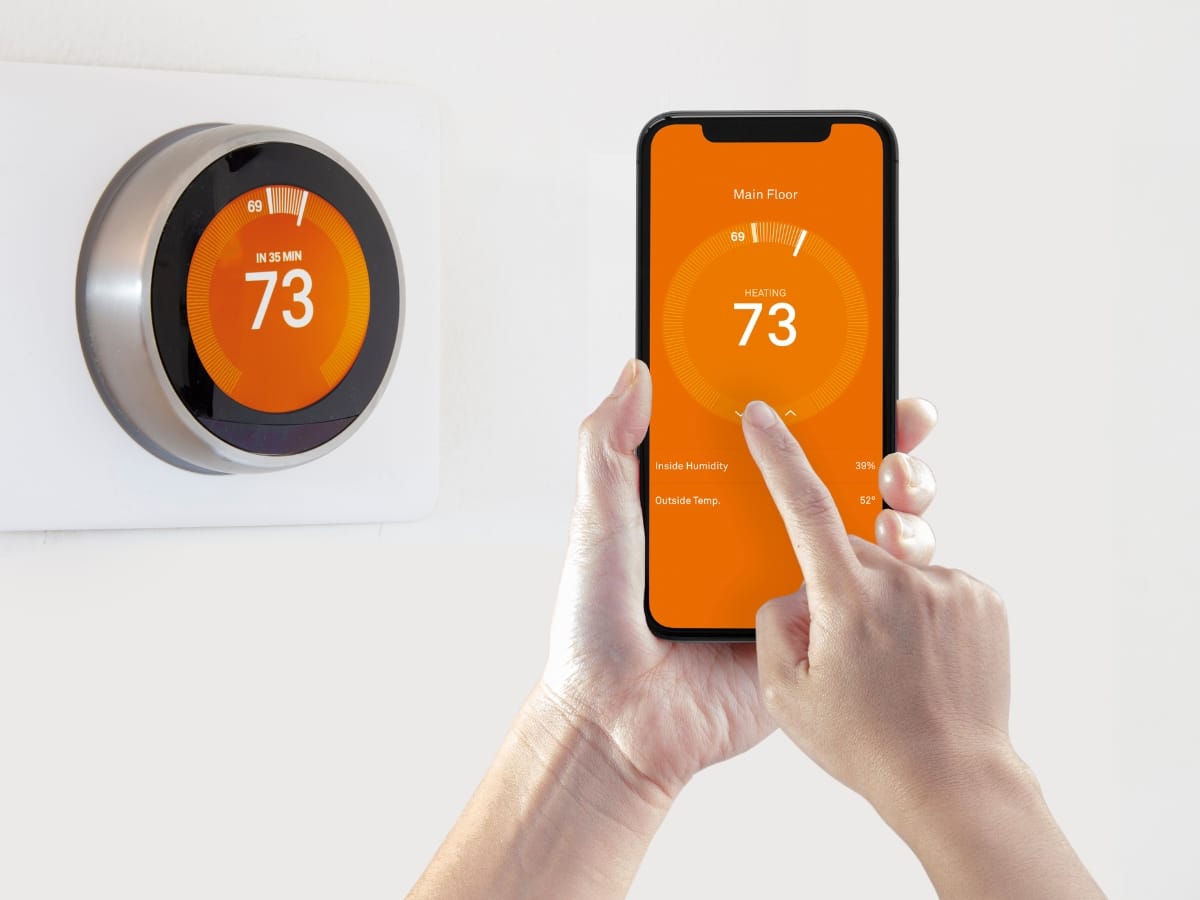
Pairing a smart thermostat with fall HVAC maintenance gives you two advantages at once. The tune-up restores safe, efficient operation, while the thermostat adds precision control and better visibility into how your system runs. Together they smooth out temperature swings common in early cold snaps, trim wasted run time, and create a clear record of how settings affect comfort and cost. You also gain alerts when filters are due and when temperatures drift from normal, which helps you spot small problems before they become repairs.
How Do Smart Thermostats Improve Energy Efficiency in Fall?
Efficiency gains come from tighter control. Learning and occupancy features lower heat output when rooms are empty and bring temperatures back gently before you return. Weather data helps the thermostat temper recovery on milder days so the system does not overshoot. Most models show hourly and daily runtime, so you can see, for example, how a two degree setback affects cycle length and indoor comfort. When this data is reviewed after fall HVAC maintenance, you can fine tune schedules with confidence because the equipment is clean, calibrated, and operating as designed.
What Are the Steps to Connect Smart Thermostats to Your HVAC System?
Installation is simple if you plan ahead. Cut power at the breaker, remove the old wall plate, and label each wire as you disconnect it. Confirm you have a common wire, since most smart models need constant power. Mount the new base, connect each wire to its matching terminal, restore power, and complete the on-screen setup to join your home network. After the first day, review heat type, auxiliary heat settings for heat pumps, and any adaptive recovery options so the thermostat operates in step with your equipment and your schedule.
How Does Remote Control and Automation Enhance Fall Heating Comfort?
Remote access lets you make practical changes without walking to the wall control. If a cool front arrives early, you can start warming the house on the drive home. Geofencing can switch to an away setpoint when everyone leaves and return to occupied settings as you head back. Automation also prevents unnecessary cycles at night by shifting to a modest setback, then preheating gradually so the target temperature is reached at the time you choose. These small adjustments keep rooms comfortable without adding runtime.
How Should Acworth Homeowners Choose a Smart Thermostat?
Start with compatibility. Confirm support for your heat source, whether that is a gas furnace, a heat pump with auxiliary heat, or a dual fuel setup. Next, decide which features matter. If your home has rooms that warm or cool at different rates, look for remote sensors. If you prefer simple schedules, a clear interface may be more important than advanced learning. Consider data access as well. A model that exports runtime and temperature history makes it easier to evaluate changes after fall HVAC maintenance. Lastly, check whether the thermostat supports alerts for filter changes and unusual temperature drops, since those notifications can prevent a small issue from becoming an emergency call.
Conclusion
Don’t wait for the first chilly night to discover your HVAC system isn’t ready for fall. At CoolPro Heating & Cooling, we specialize in Acworth-specific fall HVAC maintenance that optimizes performance, prevents breakdowns, and keeps your energy bills in check all season long. Send us a message through our site form or call 770-694-6232 today—because your comfort shouldn’t depend on luck.


